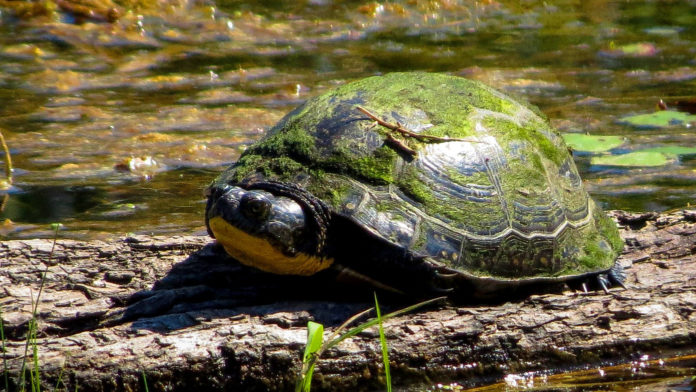Thanks to a decade of community efforts in rural southwestern Ontario, the Long Point Causeway no longer lays claim to the fourth deadliest site worldwide for turtle road mortality.
The roadway connects the Long Point Peninsula on Lake Erie and mainland Ontario, and borders the Big Creek National Wildlife Area, a UNESCO-designated biosphere. Being so close to a wetland ecosystem means that turtles often ended up on the road, putting them in the path of oncoming traffic.
Fed up with the staggering amount of roadkill, estimated at 10,000 animals per year, it was the community that rallied to find a way to protect wildlife from venturing out into the road. They raised funding to establish a multi-pronged system of public education, signage, barriers, and culverts to provide alternate paths under the roadway for migrating turtles to use.
Chantel Markle, PhD candidate in the Department of Biology at McMaster University, and Rick Levick, project coordinator of the Long Point Causeway Improvement Project, set out to measure how well the new infrastructure was working.
As it turns out, the number of turtles on the roadway has fallen by 89 percent over the decade since the project started, making this intervention a leading example for roadways that border sensitive ecological areas around the world.
The installation started with fences, with three different types of fencing depending on the relevant terrain. This alone cut turtle mortality in half.
However, to thrive the animals still needed to be able to cross the road to migrate between the wildlife area and Long Point Bay. Without access to the road, an alternative was needed.
In the second phase of the project, culverts were installed to provide underpass tunnels for wildlife to pass through. Researchers found that all kinds of wildlife were using the culverts as safe tunnels to cross the road unharmed, including snakes, minks, weasels, and frogs.
This success was of particular value to turtles, as it takes many years for them to reach sexual maturity; for some species, it can take up to 20 years before they can reproduce. This means that the loss of even a few adults each year can be devastating for the entire population.
The project team thinks of the dual approach of continuous fencing and culverts as two parts of a single system.
In addition to physical infrastructure, the team credits public education as a core part of their strategy. One way to improve awareness was the move to install bold road signs during busier spring and summer months only to prevent them from becoming a mundane part of the road landscape.
Beyond that, understanding the dangers the roadway represented for threatened species helped build citizen support and participation, which was the first step in building this remarkable community conservation effort.








































